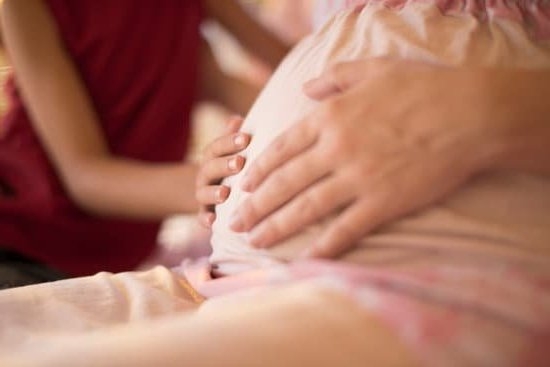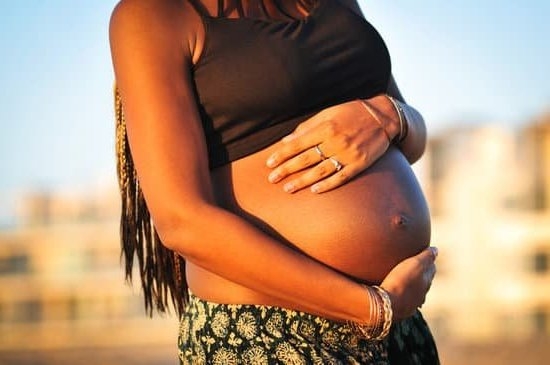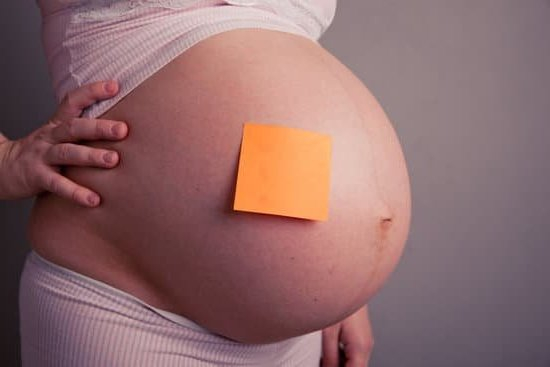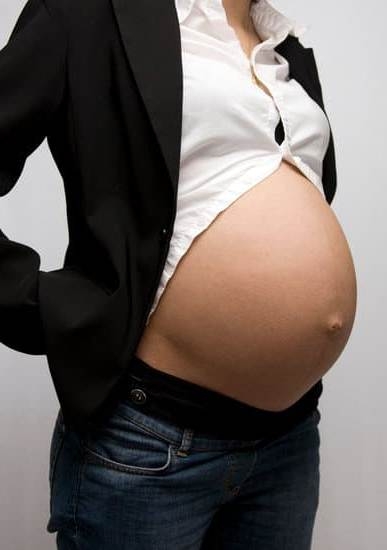Introduction
Twins are two offspring born from the same pregnancy. Characteristically, twin pregnancies involve simultaneous conception of two fertilized eggs and each egg is potentially fertilized by a different sperm cell. This type of pregnancy is important to consider due to increased health risks for mother and baby as well as additional medical monitoring required throughout the pregnancy.
Early signs of a twin pregnancy can include more intense nausea (morning sickness) during the first trimester, an unusually large abdominal size for weeks earlier than normal during the second trimester, very rapid weight gain in the second and third trimester, higher than normal levels of human chorionic gonadotropin (or hCG) hormones in urine or blood tests and fetal movements that are stronger and more frequent than normal singleton pregnancies. The best way to accurately identify twins during pregnancy is through ultrasound imaging.
Common Symptoms of Twins Pregnancy
1. Feeling More Tired than Usual: Increased fatigue is one of the first signs of twins pregnancy, as there are now two fetuses and placentas providing nourishment to the mother’s body. Increased fatigue can also be caused by higher levels of hormones in the body, as well as increased blood circulation that occurs during twin pregnancies.
2. Quicker Weight Gain: Women carrying a single fetus get an average recommended weight gain between 25-35 lbs, yet studies have shown that women carrying twins gain approximately 35-45 pounds or even more, depending on which trimester they are in.
3. Heightened Sense of Smell: Some women have reported a heightened sense of smell during twin pregnancies due to increased hormone activity, and this can cause nausea or dizziness in some pregnant women.
4. Larger Uterus Size: A larger uterus size can be indicative of twins since it means the uterus must expand to accommodate the growing fetuses and placentas. Women should keep track their growing bellies with a tape measure and compare size to what is normal at any given gestation period in order to rule out any potential concern for increase risk for health complications during pregnancy
5. Stronger Fetal Movements: As there are now two babies living inside mommy’s belly, stronger kicks and movements can sometimes be felt earlier – as early as 16 weeks but usually closer to 20th week — for those moms expecting twins compared to those having singleton pregnancies .
Increased Hormone Levels
Hormone levels in a woman’s body change significantly during pregnancy, with both increased and decreased levels of various hormones compared to pre-pregnancy levels. This can be especially true for women carrying multiple babies, including twins, due to the extra strain carried by their body.
Increased levels of the hormones Human Chorionic Gonadotropin (hCG) and Estrogen are likely indicators that a woman is pregnant with twins. Higher basal body temperatures could also point to an increased chance of multiples pregnancy, as well as fatigue and nausea. An ultrasound scan performed during the first trimester will detect multiple gestations with confidence if twins or triplets are suspected based on physical signs such as over-sized uterus or additional fetal heartbeats. Other tests that may detect multiples include Doppler testing within 10 to 13 weeks of gestation and genetic testing prior to 12 weeks of gestation. Furthermore, higher circulating concentrations of hCG in early pregnancy can give clues about the number of fetuses present. It is also common for mothers carrying twins to experience ‘quickening’ – feeling movements from the babies earlier than usual – around 18 weeks gestation or less.
Generally, most women fail to suspect multiples early because signs and symptoms can be similar in both cases until advanced stages when differences become more obvious. If any concerns arise regarding possible twin pregnancy, then consultation with the doctor should be made as soon as possible so other tests may be conducted if necessary.
Morning Sickness
Expecting mothers should be aware that a heightened level of morning sickness can be one of the early signs associated with a twin pregnancy. Symptoms associated with this form of morning sickness include feeling extremely nauseous, fatigue and soreness. The cause behind this is believed to double levels of pregnancy hormones in the mother’s body as well as an increase in blood volume.
In order to alleviate some of these common symptoms, experts suggest eating smaller meals more frequently for example snacks every couple of hours rather than three large meals each day. Additionally, avoid fatty and spicy foods which can worsen nausea and make sure to drink plenty of water throughout the day. Additionally, researchers have found that taking prenatal vitamins approved by your doctor may help – they contain folic acid which can help reduce nausea levels in pregnant women experiencing the extra-strength version of morning sickness associated with twin pregnancies. Where appropriate, enlisting the help of family members or friends especially during times where pregnancy fatigue is a particular issue will also help lighten the load.
Bigger Bump
Early signs of twins pregnancy can include a bigger belly than with a single fetus pregnancy. Having twins usually means that the uterus expands more quickly and to a greater size, creating a bigger bump in the mother’s abdomen than what is seen with a single fetus. During prenatal care visits, an ultrasound technician or midwife will typically be able to distinguish between the presence of one fetus versus two or more. In addition, most healthcare providers may be able to detect a larger-than-normal size of the abdomen which is often an indication that more than one baby is present.
When comparing the size of bumps during single pregnancies and twin pregnancies, there may be marked differences even as early as 12 weeks into the pregnancy. This can be due to faster growth (or doubling up) rate of multiple fetuses growing inside the same sac so they take up more space thus making the bump look larger. Some additional signs may include ‘quickening’ or feeling fetal movements earlier than normal; increased levels of hormones hCG (human chorionic gonadotropin); or hearing two heartbeats instead when using a Doppler device in late pregnancy.
Fetal Movement
Twins pregnancies can often be perceived as having increased fetal movement, compared to singleton pregnancies. This is due to the fact that more than one baby is growing in the uterus and can be more active. More babies means more space, which provides greater room for each baby to move around and kick their legs. In addition, since the placenta is shared by two babies, there may be less nutrition available for them both. This could cause them to become more active in order for their bodies to receive enough oxygen and nutrients from the mother’s bloodstream.
It is important to pay close attention to any changes in fetal movement for twins pregnancies and consult a medical professional if anything does not feel normal. It is possible that decreased or no fetal movement can be an indication of inadequate nutrition or some other problem with either one or both of the fetuses. It could also indicate restricted growth within the uterus due to too much amniotic fluid or improper placement of either one or both of the babies inside the womb. Since twin pregnancies are at a higher risk than singleton pregnancies, it is important that expecting mothers remain aware of any sensations they feel and seek medical help if necessary.
Ultrasound Results
When it comes to twins pregnancy, ultrasound results can be used as a primary indicator in order to detect multiple states. During the early stages of pregnancy, an ultrasound should be done around the sixth or eighth week at the earliest – and depending on when it is taken, this scan may be able to show two separate sacs where the embryos are developing and growing. This is usually a very clear sign that expectant parents are indeed carrying twin babies.
If a single sac was detected during an earlier scan (which doesn’t rule out twins completely) it may be wise for expecting parents to get further scans throughout their pregnancy in order increase their chances of detecting any potential twins not seen on initial ultrasounds.
A follow up ultrasound should be performed anywhere between 12-14 weeks in order to detect any additional evidence from the mother’s womb that could suggest there might be more than one baby inside. If a previous scan has indicated only one embryo present, yet another scan is done and two embryos are seen, then there’s every chance that you’re expecting two babies!
Higher Risk of Complications
Twin pregnancies come with a greater risk of complications compared to singleton pregnancies. This is because delivering two babies at the same time puts strain on the mother’s body, as well as possible issues encountered with increased amniotic fluid and an increased number of blood vessels dividing the two fetuses. The prevalence of these risks can vary quite considerably and depend on individual circumstances, such as age or whether the person has experienced pregnancy before.
The most common complications associated with twin pregnancies are premature labour, caesarean delivery, pre-eclampsia (condition linked to high blood pressure), anaemia, and gestational diabetes. Premature labour is a huge concern for women pregnant with twins as it affects more than half of all cases; however, if babies are born after 33 weeks they may still have a good chance of survival. Additionally, since pregnant women carrying twins have higher levels of amniotic fluid, there is an increased risk of water breaking prematurely or developing an infective disease such as chorioamnionitis and sepsis.
In order to reduce the risks associated with twin pregnancies there are several steps that can be taken during prenatal care. These include proper nutrition and taking precautionary measures such as avoiding smoking or drinking alcohol during pregnancy. Regular ultrasounds and blood tests should also be part of any twin pregnancy plan in order to monitor fetal growth rates as well as examine other aspects like placental location and blood flow between twins. Similarly, increased rest may be beneficial in delaying premature delivery or minimizing other risks associated with twins’ pregnancies.
Summary and Conclusion
With any pregnancy, it is essential to get regular medical advice for utmost safety and care. It is especially important for those who are expecting twins, as there are several signs that may indicate a twin pregnancy. These can include higher levels of hCG, an excess of morning sickness, an earlier or heavier than usual fetal heart rate, or an enlarged abdomen. The presence of multiple babies may also be picked up by ultrasound. If any or all of these symptoms exist, then seeking advice from an obstetrician to help manage the risks associated with a twin pregnancy is important and will provide the opportunity to plan ahead better throughout each trimester and overall course of the pregnancy. Keeping track of symptoms and changes throughout pregnancies can help mothers and doctors alike identify if twins are in fact the cause of certain conditions or symptoms during a healthy pregnancy.

Welcome to my fertility blog. This is a space where I will be sharing my experiences as I navigate through the world of fertility treatments, as well as provide information and resources about fertility and pregnancy.





